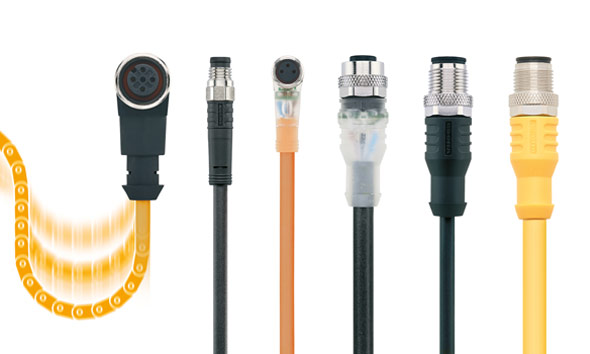Connectivity for the Automotive Industry
10 February 2020

Halver, 10 February 2020 – The connectivity specialist ESCHA has launched a comprehensive product portfolio for the automotive industry. The new single-ended- and double-ended cordsets in housing styles M8 and M12 are optimally adapted for the diverse requirements within the body construction as well as the vehicle assembly. Moreover, a distinction is made between standard- and safety applications in both application areas.
Portfolio for the body construction
With the new cable designated S740, ESCHA now offers a cable quality perfectly suited for weld-field applications in body construction. Due to an enlarged outer-jacket, the PUR-cable is particularly resistant to welding beads. Good drag chain- and torsion properties as well as a UL-certification complement the cable’s profile.
For safety applications, the cable designated S740YE is also available with a yellow outer jacket and yellow overmolded grip body. The properties and approvals of cable and connector remain unchanged.
Portfolio for the vehicle assembly
For the vehicle assembly and other crafts, ESCHA has already opted for the proven and versatile S370-cable for a long time, which can be combined with different M8- or M12-connectors. This PUR-cable quality disposes of good drag chain- and torsion properties as well as an UL-approval.
With the new cable quality designated S370YE, a yellow variant is now available that can be used in safety applications. For the S370YE, connectors with yellow overmolded grip bodies are available as well. The properties and approvals of cable and connector are identical to those of the black version.
Matching accessories
Matching ESCHA original-accessories – such as Y-splitters or mounting kits for M8- and M12-connectors – complete the product portfolio for the automotive industry. With Y-splitters, branches can easily be realized, and double-ended cordsets can be saved. Mounting kits ensure a safe hold in the open routing of single-ended- and double-ended cordsets. In addition, they increase clarity and order in the system.